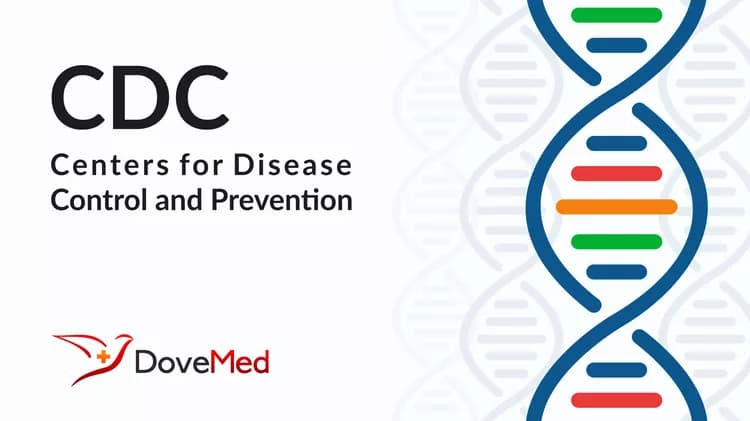
Antibiotic Resistance In Foodborne Germs Is An Ongoing Threat
Antibiotic resistance in foodborne germs is an ongoing threat
CDC report shows progress and problems among foodborne germs it tracks
Antibiotic resistance in foodborne germs, an ongoing public health threat, showed both positive and troubling trends, according to data tracked by the Centers for Disease Control and Prevention in 2012. Each year, antibiotic-resistant infections from foodborne germs cause an estimated 430,000 illnesses in the United States. Multi-drug resistant Salmonella, from food and other sources, causes about 100,000 illnesses in the United States each year.
The most recent data showed that multi-drug resistant Salmonella decreased during the past 10 years and resistance to two important groups of drugs – cephalosporins and fluoroquinolones – remained low in 2012. However, in Salmonella typhi, the germ that causes typhoid fever, resistance to quinolone drugs increased to 68 percent in 2012, raising concerns that one of the common treatments for typhoid fever may not work in many cases.
About 1 in 5 Salmonella Heidelberg infections was resistant to ceftriaxone, a cephalapsorin drug. This is the same Salmonella serotype that has been linked to recent outbreaks associated with poultry. Ceftriaxone resistance is a problem because it makes severe Salmonella infections harder to treat, especially in children.
The data are part of the latest report of the National Antimicrobial Resistance Monitoring System (NARMS), a tri-agency surveillance system that has tracked antibiotic resistance in humans (CDC), retail meats (Food and Drug Administration), and food animals (U.S. Department of Agriculture) since 1996. The report from CDC NARMS compares resistance levels in human samples in 2012 to a baseline period of 2003-2007.
“Our latest data show some progress in reducing resistance among some germs that make people sick but unfortunately we’re also seeing greater resistance in some pathogens, like certain types of Salmonella,” said Robert Tauxe, M.D., M.P.H, deputy director of CDC’s Division of Foodborne, Waterborne, and Environmental Diseases. “Infections with antibiotic-resistant germs are often more severe. These data will help doctors prescribe treatments that work and to help CDC and our public health partners identify and stop outbreaks caused by resistant germs faster and protect people’s health.”
Among the other findings in the 2012 report:
Campylobacter resistance to ciprofloxacin remained at 25 percent, despite FDA’s 2005 withdrawal of its approval for the use of enrofloxacin in poultry. Ciprofloxacin and enrofloxacin are both in the fluoroquinolone class of drugs.
Shigella resistance to ciprofloxacin (2 percent) and azithromycin (4 percent) is growing. However, no Shigella strains were resistant to both drugs.
Although fluoroquinolone resistance remained low in 2012, Salmonella enteritidis – the most common Salmonella type – accounted for 50 percent of infections resistant to the fluoroquinolone drug nalidixic acid, which is used in laboratory testing for resistance. Resistance to nalidixic acid relates to decreased susceptibility to ciprofloxacin, a widely used fluoroquinolone drug. Other work shows that many of the nalidixic acid resistant Salmonella enteritidis infections are acquired during travel abroad.
The report introduces a new method for interpreting Campylobacter data and includes links to online interactive graphs where users can choose an organism and an antibiotic and see the “bug-drug” trends from year-to-year in NARMS.
CDC NARMS monitors antibiotic resistance among clinical isolates of six types of common foodborne germs reported from all 50 states. In 2012, NARMS tested over 5,000 isolates for antibiotic resistance. By comparing results in 2012 with the baseline period of 2003-2007, NARMS provides important information on whether foodborne germs are gaining or losing resistance.
The FY 2015 President’s Budget requests funding for CDC to improve early detection and tracking of multidrug resistant Salmonella and other urgent antibiotic resistance threats. The proposed initiative would increase CDC’s ability to test drug-resistant Salmonella by 20 times. With a $30 million annual funding level over 5 years, CDC estimates that it could achieve a 25 percent reduction in multidrug resistant Salmonella infections, as well as significant reductions in other resistant infections.
The full 2012 NARMS report is available on the CDC website at www.cdc.gov/narms/reports/annual-human-isolates-report-2012.html. For more information about NARMS, please visit www.cdc.gov/narms.
###
U.S. DEPARTMENT OF HEALTH AND HUMAN SERVICES
Related Articles
Test Your Knowledge
Asked by users
Related Centers
Related Specialties
Related Physicians
Related Procedures
Related Resources
Join DoveHubs
and connect with fellow professionals

0 Comments
Please log in to post a comment.